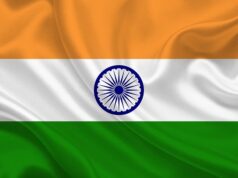More than 51 percent of the people who died because of air pollution were younger than 70, said the study, conducted by academics and scientists from various institutions in India and around the world.
It was funded by the Bill & Melinda Gates Foundation, the Indian government and the Indian Council of Medical Research.
Of the total, about 670,000 died from air pollution in the wider environment and 480,000 from household pollution related to the use of solid cooking fuels.
New Delhi was most exposed to the tiny particulate matter known as PM2.5, which can reach deep into the lungs and cause major health problems, the study concluded. Some northern states closer to Delhi were almost as bad.
Average life expectancy in India in 2017 would have been higher by 1.7 years if air quality was at healthy levels, the report said.
That isn’t as gloomy as some other recent studies. For example a University of Chicago report released last month said prolonged exposure to pollution reduces the life expectancy of an Indian citizen by over four years.
Still, the new study shows India has a higher proportion of global health loss due to air pollution — at 26.2 percent of the world’s total when measured in deaths and disability — than its 18.1 percent share of the world’s population.
“The findings of this study suggest that the impact of air pollution on deaths and life expectancy in India might be lower than previously estimated, but this impact is still quite substantial,” the study said.
Delhi’s air was “very poor” on Thursday, according to a federal pollution agency. The city’s quality of air has swung between “severe” to “hazardous” levels multiple times in the past two months.
The city residents’ apparent lack of concern about the toxic air — whether through ignorance, apathy or the impact of poverty — gives federal and local politicians the cover they need for failing to vigorously address the problem, pollution activists, social scientists and political experts have said.
Earlier this year, the World Health Organization said India was home to the world’s 14 most polluted cities.
The study comes as India, like China, increasingly switches to liquefied natural gas, the cleanest and fastest-growing fossil fuel.
The rise in pollution rankings of Indian cities may increase pressure on lawmakers to boost imports of LNG or face “civil unrest,” Paul Wogan, chief executive officer of LNG ship owner and operator GasLog Ltd., said at an industry conference in London on Wednesday.
“It used to be if you look at the 50 most polluted cities in the world, 30 of them would be in China,” he said. “If you now look at the 50 most polluted cities in the world, most of them are in India, and the Indian government are looking at this in the same way that China did.”
China surprised the industry with the strength of a government-led push to convert to natural gas, which led to a doubling of LNG imports over the past two years.
The nation may be a “big part of the solution of absorbing new LNG” as production plants from the U.S. to Australia ramp up next year, Pat Roberts, managing director of LNG-Worldwide Ltd., said in an emailed report to the conference.
India’s natural gas demand is seen rising 4.9 percent annually to 2040, outpacing growth of 4.7 percent in China, according to the International Energy Agency. The Indian government is keen to boost the use of gas to combat air pollution and is promoting the expansion of gas infrastructure, including four additional LNG receiving terminals under construction.
“You think about China’s growth and the growth driven by the cleaning of the air. What are other major economies around the world that are in a similar position?” Iain Ross, CEO of Golar LNG Ltd., which operates LNG vessels, floating import terminals and production units, said at Wednesday’s conference. “The next on policy could be India, in terms of legislatively just deciding to do something.”



